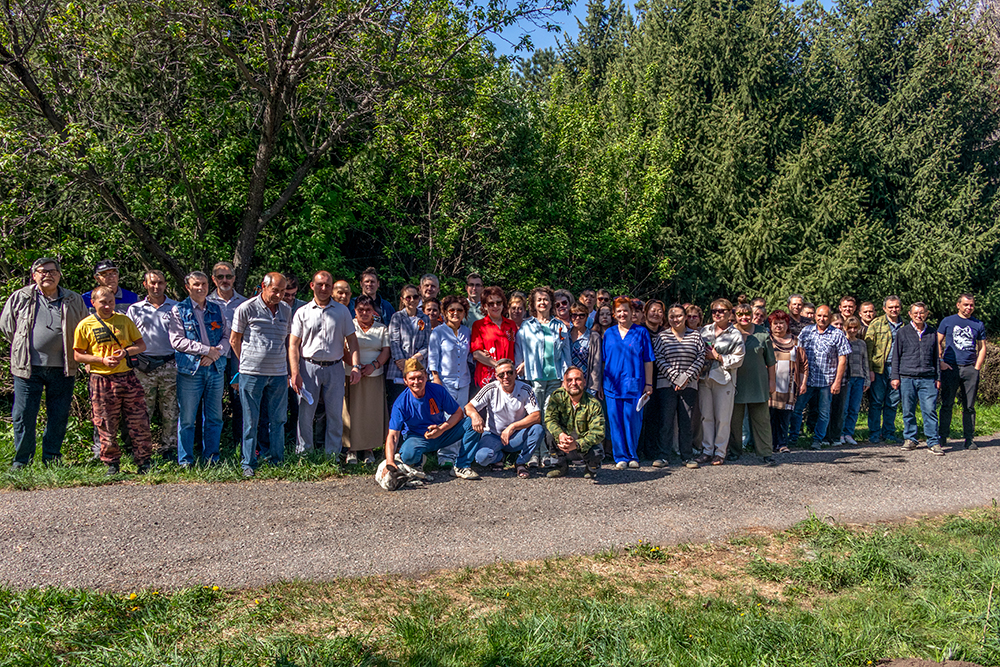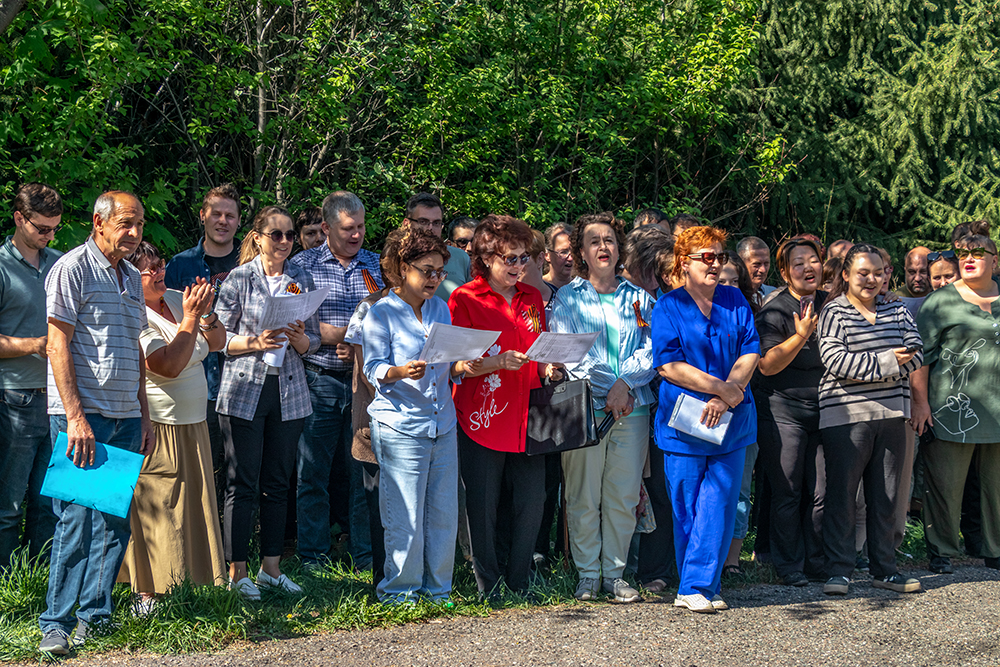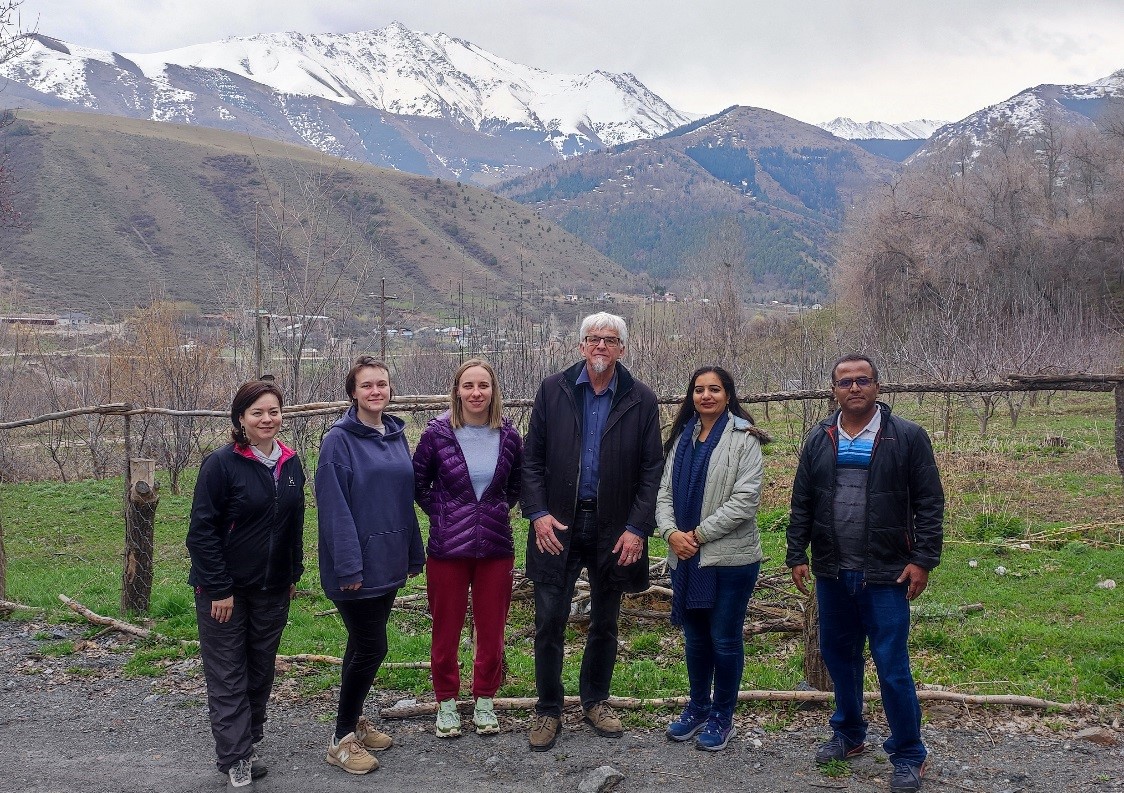We welcome you to the official site of the Research Station of the Russian Academy of Sciences in Bishkek city.
Federal State Budget Institution of Science Research Station of the Russian Academy of Sciences in Bishkek city is the research organization subordinated to the Ministry of Science and Higher Education of the Russia Federation.
The Research Station of RAS engages 57 scientific workers, including 26 researchers, 2 Doctors of Sciences and 8 Candidates of Sciences among them. The overall staff amounts 133 employees.
Address
![]()
720049, Kyrgyzstan.
Bishkek-49, Research Station RAS.
Phone: +996 (312) 613-140
Fax: +996 (312) 611-459
Director

Anatoly Kuzmich Rybin
Doctor of Science
in Physics and Mathematics
e-mail: rybin@gdirc.ru
XVII International Conference of Young Scientists and Students "MODERN EQUIPMENT AND TECHNOLOGIES IN SCIENTIFIC RESEARCH" – 2025. Collection of materials
Dear colleagues,
On April 23-25, 2025, the XVII International Conference of Young Scientists and Students " MODERN EQUIPMENT AND TECHNOLOGIES IN SCIENTIFIC RESEARCH " was held at the Research Station of Russian Academy of Sciences in Bishkek city (Kyrgyz Republic).

The electronic version of the Collection of materials is available for download on the Conference website in the «Archive» http://mmk.gdirc.kg/archive/
The Collection of Conference materials is registered with the Book Chamber of the Kyrgyz Republic (ISBN 978-9967-12-998-6).
Currently, the Collection of materials is undergoing the stage of placement in the information and analytical system of RSCI (https://elibrary.ru/). We will inform you about the results in additional letter.
Academic Secretary of the Research Station of Russian Academy of Sciences in Bishkek city
+996(312)61-31-40
This e-mail address is being protected from spambots. You need JavaScript enabled to view it , This e-mail address is being protected from spambots. You need JavaScript enabled to view it
Last Updated on Friday, 03 October 2025 13:31
Seminar "Geological and Geophysical Monitoring of the Tien Shan Lithosphere", September 17, 2025
Dear colleagues!
We are starting the fifth season of seminars!
On Wednesday, September 17, at 16:00 (Moscow time) 19:00 (Bishkek time) in the conference hall of the SIPE RAS, online and offline seminar "Geological and Geophysical Monitoring of the Tien Shan Lithosphere" will be held by the Research Station of the Russian Academy of Sciences in Bishkek city together with the Shmidt Institute of Physics of the Earth of the Russian Academy of Sciences, co-chairs of the seminar are D.Sc. P.N. Alexandrov (CGEMI SIPE RAS) and D.Sc. A.K. Rybin (RS RAS). Seminar is dedicated to discussion of dissertation work of V.V. Bobrovskii.
The topic is "Broadband measuring complex with noise-like signals for electromagnetic studies of modern geodynamic processes in the lithosphere of the northern Tien Shan", prepared for obtaining the degree of Candidate of technical sciences.
All interested are invited.
You can join the seminar online at the link:
https://meet.ifz.ru/seminar-ifz-nsran
If you plan to attend the seminar in person and are not an employee of the SIPE RAS, please send a letter to This e-mail address is being protected from spambots. You need JavaScript enabled to view it with your full name to obtain a pass no later than September 12.
Last Updated on Friday, 12 September 2025 14:13
Research Station of RAS in Bishkek city – 2025 – Collection of reports (24-29 of June 2024)
The Organizing Committee of IX International Symposium "PROBLEMS OF GEODYNAMICS AND GEOECOLOGY OF INTRACONTINENTAL OROGENS" (June 24-29, 2024, Research Station of the Russian Academy of Sciences in Bishkek, Kyrgyzstan) invites all colleagues who participated in the Symposium to provide full-text versions of their reports for publication in the proceedings of the Symposium (publication of the collection and article-by-article placement in the RSCI is scheduled for the 4th quarter in 2025).
Requirements for the design of materials
Materials should be sent to This e-mail address is being protected from spambots. You need JavaScript enabled to view it by October 1, 2025.
We remind you that the main files on the Symposium (Solution, collection of abstracts, photographic materials, presentations) are hosted in the cloud: https://cloud.mail.ru/public/LeTZ/T7rRvvRS5 , and on YouTube page of RS RAS, you can find zoom recordings of meetings . https://www.youtube.com/@rsras8349
Olga Zabinyakova
Academic Secretary of the Research Station of RAS
This e-mail address is being protected from spambots. You need JavaScript enabled to view it
+996 (312) 61-31-40
Last Updated on Tuesday, 12 August 2025 14:17
Happy Russia Day!

The national holiday of the Russian Federation has been celebrated annually since 1992 to commemorate the adoption of the Declaration of State Sovereignty of the Russian Soviet Federative Socialist Republic (RSFSR) on 12 June 1990.
Last Updated on Wednesday, 11 June 2025 12:44
Celebration of the 80th Anniversary of Victory in the Great Patriotic War
On May 7-8-9, 2025, the staff of the Research Station of the Russian Academy of Sciences in Bishkek city (RS RAS) solemnly celebrated the 80th anniversary of Victory in the Great Patriotic War!

In honor of this significant date, we jointly created a Garden of Memory on the territory of the Scientific Station: we purchased 50 seedlings of fruit trees, planted them, and installed a memorial plaque. A ceremonial meeting was held on this occasion, which was attended by almost all the employees.
The deputy director gave a speech about the upcoming holiday and the events held and thanked everyone for their active participation in the festive events. Together we happily sang "Katyusha", perhaps the most beloved song of war time. All the planted seedlings - apple trees, pears, cherries have already sprouted.

Last Updated on Wednesday, 14 May 2025 15:09
XVII International Conference of Young Scientists and Students "Modern Equipment and Technologies in Scientific Research" - 2025

Last Updated on Tuesday, 06 May 2025 15:08
International scientific seminar within the framework of international Project RSF-DST No. 24-47-02016 implementation
From March, 31 to April, 11, 2025, an international scientific seminar is being held at the Research Station of the Russian Academy of Sciences in Bishkek cith (RS RAS) as a part of joint international project RSF-DST No. 24-47-02016 "Deep geoelectric structure of the Shillong plateau and adjacent seismically active areas (northeastern India) based on magnetotelluric data". The purpose of the seminar is to discuss the scientific results and field data of magnetotelluric studies obtained during the project in 2024 and in the first quarter of 2025.
The seminar is attended by Russian and Indian geophysicists representing the Center for Geoelectromagnetic Research of the Institute of Physics of the Earth of the Russian Academy of Sciences - a branch of the Schmidt Institute of Physics of the Earth of the Russian Academy of Sciences (CGEMI IPE RAS, Moscow, Russia), the Research Station of the Russian Academy of Sciences in Bishkek (RS RAS, Bishkek, Kyrgyzstan) and the National Geophysical Research Institute of the Council of Scientific and Industrial Research (CSIR-NGRI) Hyderabad, India).
The seminar included sessions at which the main executors of the joint Russian-Indian project RSF-DST No. 24-47-02016 "Deep geoelectric structure of the Shillong plateau and adjacent seismically active territories (NE India) based on magnetotelluric sounding data" made a reports: Dr. A. Rybin, PhD candidate A. Ionicheva, PhD candidate T. Rodina, PhD candidate K. Nepeina, Dr. Devi А. and Mr. Babu N.
The participants of the RSF-DST project presented the results obtained during its implementation on the collection, processing and analysis of field magnetotelluric sounding data in the Shillong plateau study area (northeastern India), as well as preliminary results of the analysis of magnetotelluric monitoring records carried out in the Northern Tien Shan territory.
The employees of the Laboratory of Deep Magnetotelluric Studies of RS RAS took an active part in the seminar. During the seminar, master classes were held on the organization of field measurements and modern methods of processing and analyzing field geophysical materials. The participants of the seminar had the opportunity to present their approaches and results of processing and analyzing magnetotelluric data. Two field excursions were also held: a visit to the magnetotelluric monitoring point of the RS RAS "Aksu" (Head DMTS D. Chernenko) and a visit to the regime geophysical station of the RAS NS "Kegety".
The seminar became an important platform for the exchange of experience and knowledge between Russian and Indian scientists, for training and advanced training of young researchers from our countries. We thank all the participants of the seminar for interesting reports and speeches, fruitful and informal discussion of the issues considered, which gives a small but real contribution to the development of international scientific cooperation!

Last Updated on Wednesday, 09 April 2025 13:56
More Articles...
- XVII International Conference of Young Scientists and Students "MODERN EQUIPMENT AND TECHNOLOGIES IN SCIENTIFIC RESEARCH"
- Happy Women's Day
- XVII International Conference of Young Scientists and Students "MODERN EQUIPMENT AND TECHNOLOGIES IN SCIENTIFIC RESEARCH"
- The most important scientific results of RS RAS for 2024
- Happy New Year!!!
Page 1 of 27
Last news
- XVII International Conference of Young Scientists and Students "MODERN EQUIPMENT AND TECHNOLOGIES IN SCIENTIFIC RESEARCH" – 2025. Collection of materials
- Seminar "Geological and Geophysical Monitoring of the Tien Shan Lithosphere", September 17, 2025
- Research Station of RAS in Bishkek city – 2025 – Collection of reports (24-29 of June 2024)
- Happy Russia Day!
- Gulmira Kozhogulova Kamchybekovna








